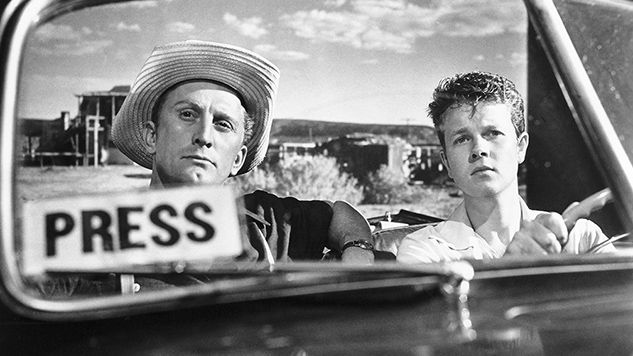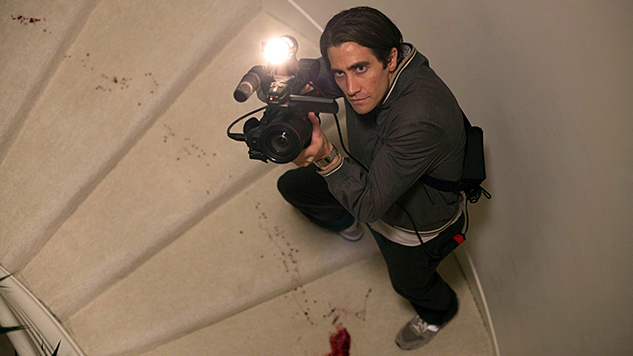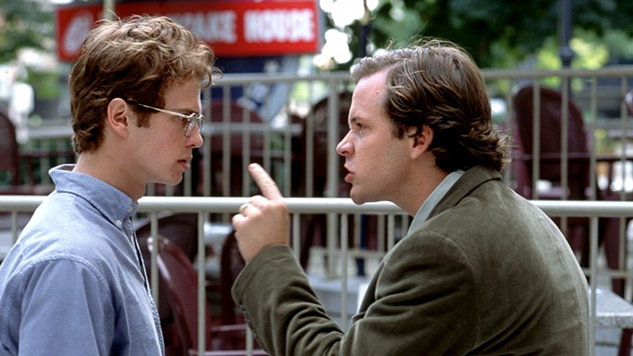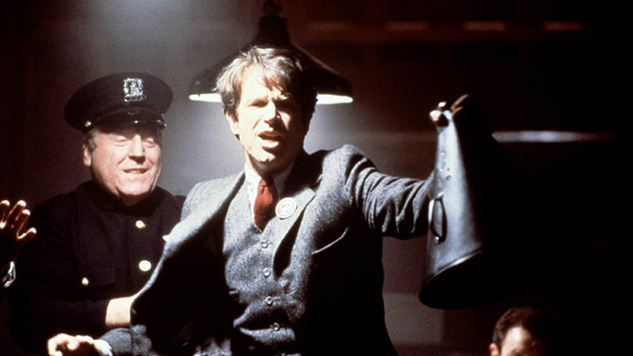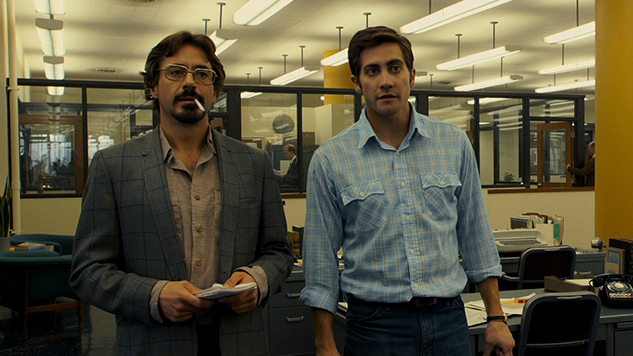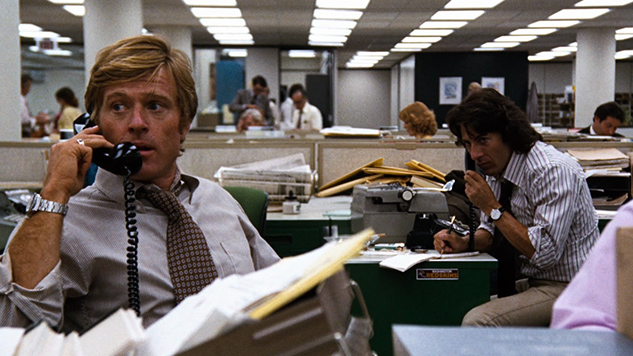The 15 Best (Fictional) Films About Journalism
The recently-released Spotlight tells the true story of The Boston Globe’s investigation into allegations of sexual abuse within the Boston Catholic Church. Following a small group of journalists as they slowly unravel a massive cover-up in spite of the church’s efforts to stop them, Spotlight is a near-flawless entry into the niche of the American Journalism Film, a kind of sub-genre of sorts that rarely fails to turn out critically acclaimed award-winners. Spotlight is, like the genre’s best, noble without going overboard, just sentimental enough and intently concerned with championing the integrity—the importance—of the job above most everything else.
There’s just something about the profession of journalism that makes for “quality” American drama: Little guy goes up against the man; hero has to choose between what’s true and what sells; intrepid reporter risks life and limb by embedding in a warzone or simply bucking the wishes of the powers that be. A journalist, whether in the newsroom or in the field, is constantly questioning, conducting interviews, or fighting with editors—it’s all very cinematic. And oh, the delightful tropes journalism in film has brought us! Where would we be without montages of long nights of research or spinning newspapers or some street urchin yelling, “Extra! Extra!”?
So with Spotlight starting the conversation, it seems an appropriate time to look back at the (fictional) films that best exemplify the occupation of journalism—no matter the journalist’s medium. With a mix of the heroic and the satirical, the serious and the light-hearted, here are 15 of film’s greatest odes to humanity’s second oldest profession.
15. Network
Director: Sydney Lumet
Year: 1976
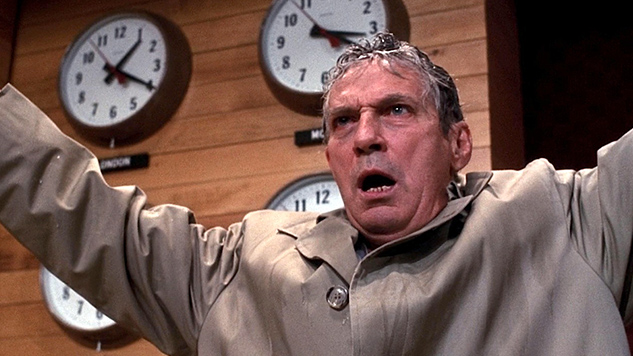
One of the best-known journalism films of the past 50 years, Network is a vicious satire of the world of television, where ratings and advertising dollars are everything, and any shred of truth must be punched up and manipulated. It’s a film of quotable dialogue (“I’m mad as hell, and I’m not going to take this anymore”) and memorable characters, from Peter Finch’s unraveling Howard Beale, the “mad prophet of the airwaves,” to Faye Dunaway’s ambitious, soulless executive Diana Christensen. To viewers today, the film’s satire may seem to have all the subtlety of a sledgehammer, but it’s still a brutally funny excoriation of a medium that has only become more desperate for profit in the ensuing decades. Plus it was pretty much the first of its kind, paving the way for plenty of nimble variations on its theme, like Spike Lee’s Bamboozled.
14. Almost Famous
Director: Cameron Crowe
Year: 2000
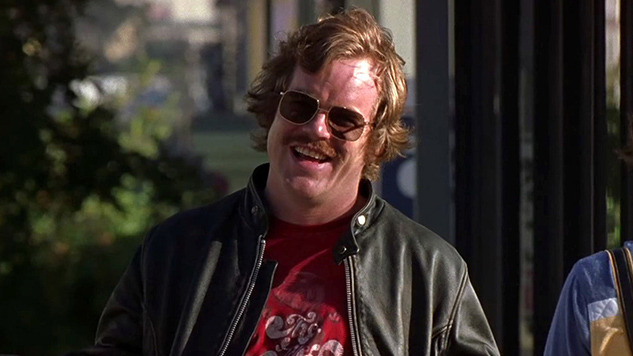
Say what you will about what Cameron Crowe’s done since, but Almost Famous holds up as a stellar examination (and celebration) of music fandom—not to mention it’s one of the only films about music journalism. It’s got, in arguably his most recognizable role, Philip Seymour Hoffman as Lester Bangs, acting as William’s and the audience’s guide to that slippery, intoxicating world of major league writing. (“You cannot make friends with the rock stars.”) Ultimately a coming-of-age story about a kid walking the line between journalism and fandom, it still resonates for those of us who have, the older we get, become more and more disillusioned by our heroes, but unable to give up on the art they make.
13. Capote
Director: Bennett Miller
Year: 2005
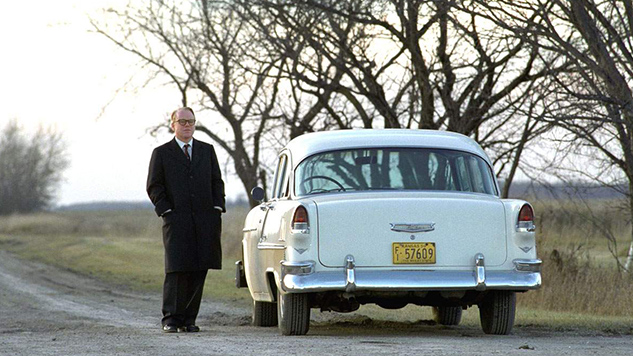
Like the rest of Bennett Miller’s short filmography, Capote is a character study above all else—not a biopic, exactly, but a close reading of one particularly hard-to-read man on the cusp of greatness. And yet, no movie about the writing of In Cold Blood (a book that introduced the concept of the “non-fiction novel” and the true crime genre as we know it) can ignore the squeamish topic of the relationships journalists must forge with their subjects. Miller’s film is an unflinching look at the paradox of a writer like Capote: In order to pen one of the twentieth century’s most compassionate books, he needed to engage in some manipulative, strangely cold behavior. For anyone who hasn’t read In Cold Blood, watching Capote will be a possibly dissatisfying experience, but as a companion to the book it works as an engaging deconstruction of a writer’s process. And it helps that, in Philip Seymour Hoffman’s second appearance on this list, Capote features one of the most transformative performances his incredible career.
12. Deadline USA
Director: Richard Brooks
Year: 1952
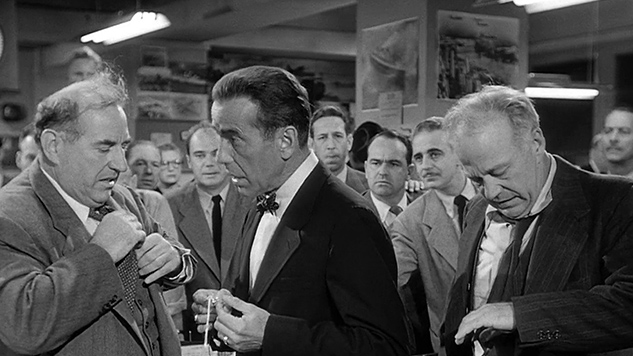
Without a doubt, Deadline USA falls into the camp of journalism films that see no lack of idealism whatsoever in the profession, with Humphrey Bogart starring as a virtuous newspaper editor who believes in exposing corruption, even if it might lose him his job. It’s the story of New York’s The Day (based on the New York Sun, which folded in 1950), a paper in the process of being sold to interests who plan to cease publication, just when Bogart and his reporters are about to break a big story. Deadline USA has an air of realism about it not always found in other “newsroom” films (the printing press scenes were shot on location in the New York Daily News building), and Bogart turns in a characteristically grounded performance, toning down the sense of inflated nobility at times apparent in the script. A subplot about the potential for a reunion with his estranged ex-wife (Kim Hunter) feels equally underplayed; the struggle of the paper, and of the people who depend on it, is the film’s timeless focus.
11. His Girl Friday
Director: Howard Hawks
Year: 1940
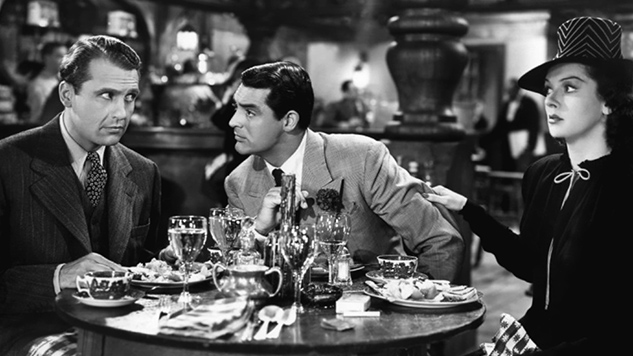
Of the three direct adaptations of Ben Hecht and Charles Macarthur’s 1928 play The Front Page, His Girl Friday is the most successful. In a bold move for the times, Hawkes chose to change the lead role of reporter Hildy Johnson to a woman, and cast Rosalind Russell opposite Cary Grant. Though it’s often heralded as one of America’s great, early screwball comedies, His Girl Friday also works as a feminist film before its time, with Hildy forced to choose between the sedate life of a housewife and the exciting world of the newsroom. The madcap antics of the plot are secondary to the witty rapid-fire repartee between Russell and Grant, which include such classic insults as “You double-crossing chimpanzee” and “You’ve got the brain of a pancake.”
-

-

-

-

-

-

-

-

-

-

-

-

-

-

-

-

-

-

-

-

-

-

-

-

-

-

-

-

-

-

-

-

-

-

-

-

-

-

-

-


